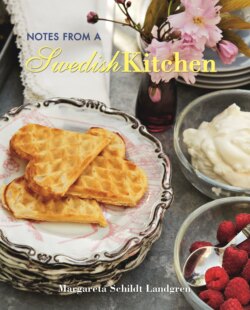Читать книгу Paracord Projects for Camping and Outdoor Survival - Margareta Schildt Landgren - Страница 6
Introduction
ОглавлениеI feel enormously privileged to be able to work with the most enjoyable thing I can imagine – food! My life has taken many different directions as I have developed personally and professionally, but food has always been important to me.
My childhood memories are focussed around food and my family gathering to eat my mother’s superb, home-cooked meals. Even if I didn’t help that much with the cooking at home, because mother’s was best, I am certain that my passion for food was born back then. My mother cooked from the basics, which was quite natural in those days. You adjusted what you ate to fit the seasons: it would have been unthinkable to eat, say, strawberries at any time other than summer. We gathered rosehips, blackberries, and mushrooms in the autumn, and made the most of the bounty Nature had to offer. Swedes down the ages have been experts at preserving food for the long, cold winters and making the most of the summer’s harvests. It is interesting to see how the old traditions are returning, and that we no longer think it’s the norm to import food from all corners of the Earth when they’re out of season in Sweden. The autumn’s root vegetables, for example, have undergone something of a renaissance in recent years.
My mother, Lisa, really wanted to train as a domestic science teacher, but since there was no such thing as a student loan back in those days, the 10,000 kronor fees were quite beyond the reach of her parents. Instead she was inspired and taught a great deal by her mother-in-law, my grandmother, Ida. Mother later developed her own recipes, and since she was very thorough she even typed them out properly. When she died a couple of years ago I inherited her original recipe book. The three grandchildren all desperately wanted their own copy – that alone says a great deal. When I look at my mother’s recipes it’s like a complete family history opening before me – a window into my childhood. The recipe book says so much about past ingredients, cooking methods, traditions and parties. Mother noted down whose favourite recipe it was, and she rewrote it carefully or updated it when needed.
You might think I trained as a domestic science teacher in order to fulfil my mother’s dream. In truth, I didn’t have the faintest inclination in that direction when I left school, but ended up doing it anyway once I had begun work as a supply teacher. In due course I did indeed train as a domestic science teacher, and loved passing on my passion for food to my pupils. Then I was offered a job in Sockerbolag’s test kitchen, where I learned an enormous amount in my four years there, and after that went on to a freelance life as a food writer, author, and filmmaker.
Every time I find myself about to begin a new job, I ask myself what it is I stand for. ‘Simple food, cooked from scratch, with locally sourced ingredients’ has become my motto. In this book I want to convey a sense of what that might mean in a Swedish kitchen, and to encourage you the reader to cook my recipes, but in your own way. In my family we often cook together, ever since my daughter was little and was able to sit on the kitchen side – an excellent way to spend time together that I hope I can inspire others to try. I often run into people who are apologetic for having covered their copy of my recipe books with food stains: in fact, for a cook, that’s one of the greatest possible compliments.
